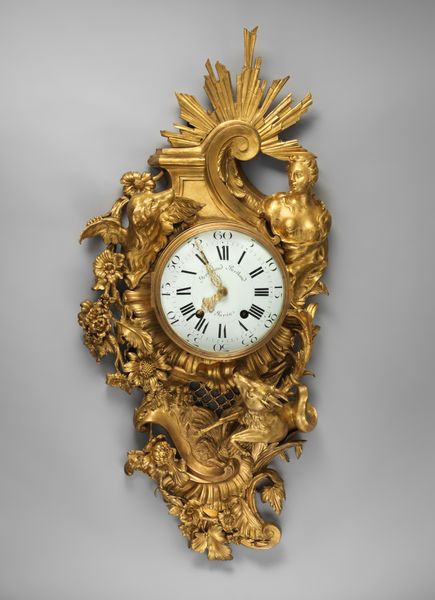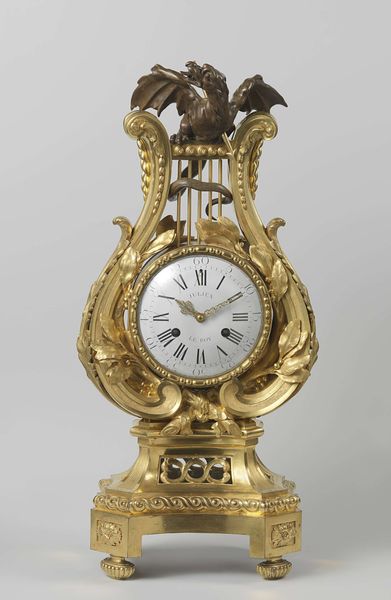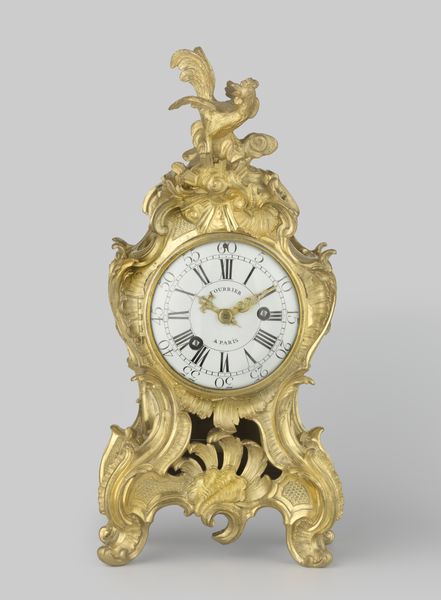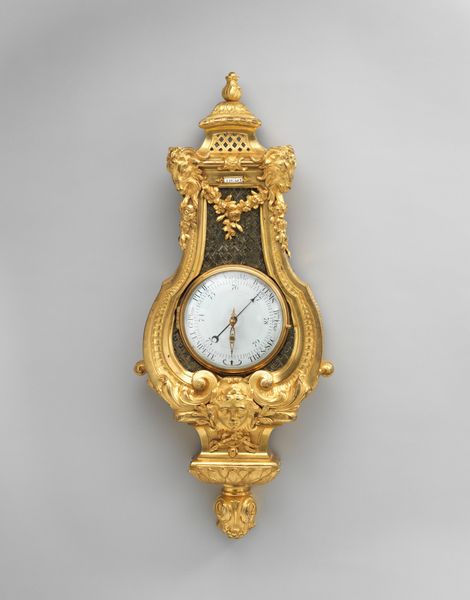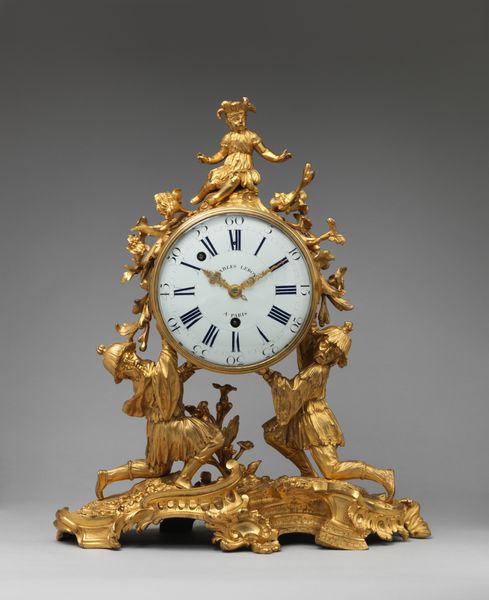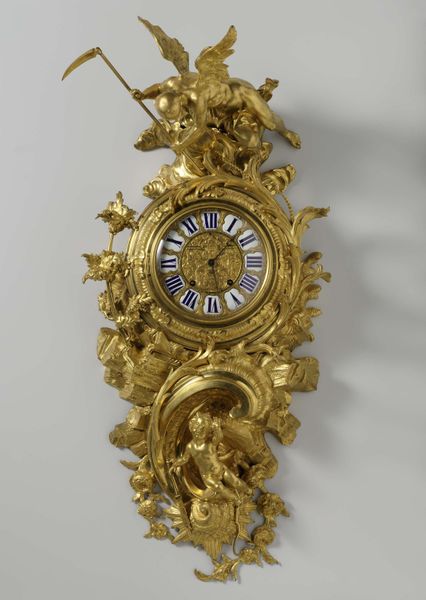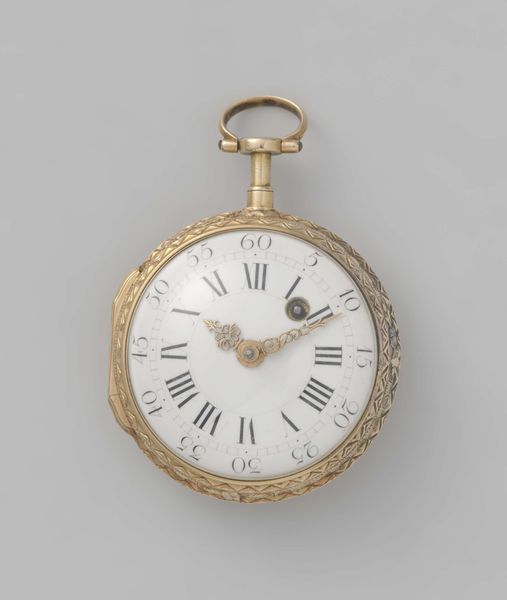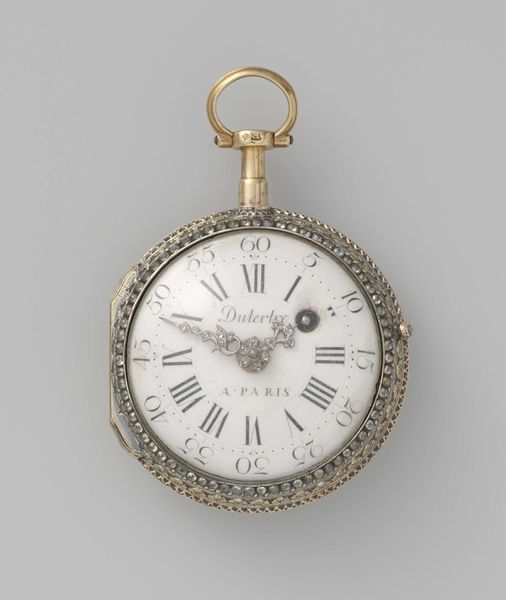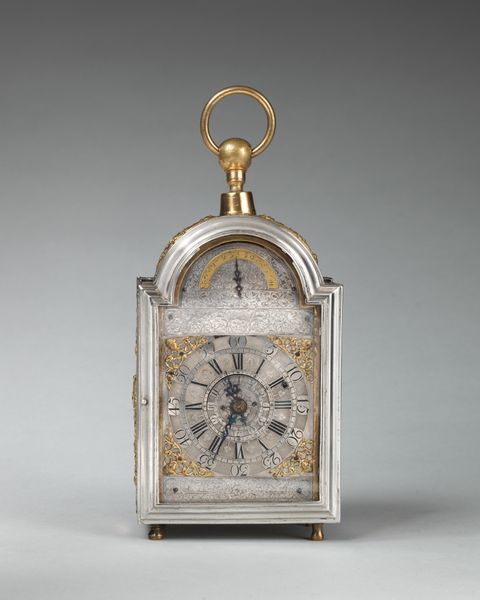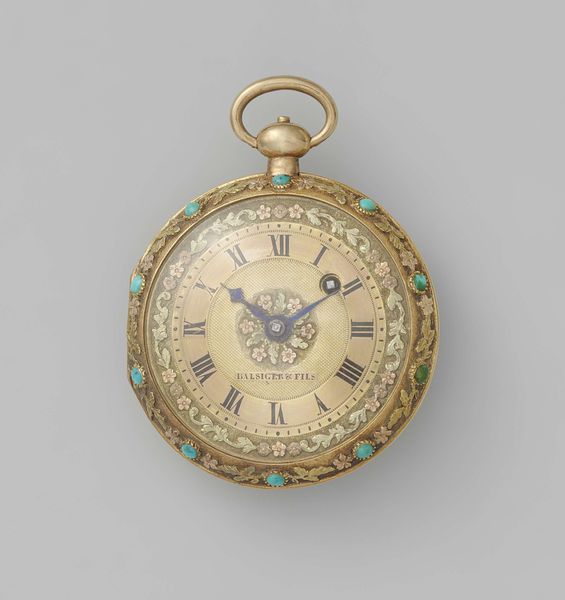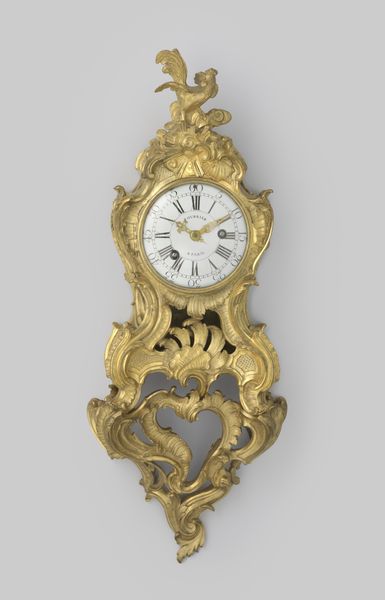
guilding, bronze, sculpture
#
allegory
#
baroque
#
guilding
#
bronze
#
sculpture
#
decorative-art
Dimensions: height 77.0 cm, width 50.0 cm, depth 26.0 cm
Copyright: Rijks Museum: Open Domain
Curator: Well, isn't this an arresting object? It's a console clock, also known as a "Pendule a console," dating back to about 1715 to 1730, created by Isidore-Guillaume Champion. The primary materials appear to be bronze and gilding. Editor: It’s quite imposing. My first thought is death—the figure at the very top brandishes a scythe, no less. Very Baroque and ornamented, almost aggressively so. What can you tell me about the context of such a... stark piece? Curator: The Baroque aesthetic certainly favored opulence, but let’s consider the practicalities first. These clocks weren't merely time-telling devices; they were declarations of wealth and power. Guilding requires skilled labor; bronze-casting even more so. The fact that it’s sculptural moves it away from merely being a clock into high art, effectively separating it from craft production. Champion wasn't just making clocks; he was participating in the visual construction of social hierarchies. Editor: Absolutely. It served as a symbol of status, reflecting the era’s courtly rituals. Consider the placement in a grand salon – a silent enforcer reminding everyone, perhaps subtly, of mortality amidst the finery. It underscores the societal fascination, or perhaps obsession, with both time and its inevitable end, death. And that decorative program– note the figures entwined within floral decorations, classical allegories no doubt emphasizing lineage and power. Curator: Yes, allegory served specific ideological functions. To understand its impact, we have to look beyond just artistry and to its placement within a very controlled sphere of aristocratic consumption and display. What statements were they hoping to achieve by combining high style, skilled artisanry, and that morbid memento mori on top? Editor: Perhaps it’s a comment on the transience of power itself, but ultimately such art speaks of the patron and to their audience. Even something as quotidian as telling time became wrapped in social messaging. What does that tell us about how power wanted to see itself? Curator: It brings home the way social messaging got built into everything from civic planning to ornamentation – the level of intent in decorative art shows the way it was considered a soft, but essential power in shaping its society’s mindset. Editor: It shows how thoroughly crafted their worldview was, not just in policy and decree, but literally forged into the objects that populated their daily lives. Curator: A somewhat unnerving, but powerful thought.
Comments
rijksmuseum about 2 years ago
⋮
Marquetry combining tortoiseshell and brass, the specialitybof the celebrated cabinetmaker André-Charles Boulle, was also practiced by many other Parisian craftsmen. This type of decoration remained fashionable for a long time, especially for clocks. This console clock is a simplified version of a model introduced by Boulle.
Join the conversation
Join millions of artists and users on Artera today and experience the ultimate creative platform.


